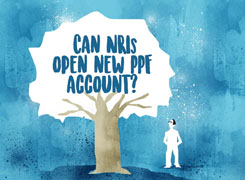Ramalingam Kalirajan |10881 Answers |Ask -Follow
Mutual Funds, Financial Planning Expert - Answered on May 17, 2024
He has an MBA in finance from the University of Madras and is a certified financial planner.
He is the director and chief financial planner at Holistic Investment, a Chennai-based firm that offers financial planning and wealth management advice.... more
.jpg)
Sir, Recently my PPF got matured and received 15L. How should I invest the money?
As a Certified Financial Planner, I understand the importance of making informed investment decisions to maximize returns and achieve your financial goals. Let's explore potential investment options for the maturity amount of your Public Provident Fund (PPF).
Congratulations on the maturity of your PPF account! It's a significant financial milestone, and it presents an opportunity to make prudent investment choices for your future financial security.
Assessing Investment Options
Diversification:
Consider diversifying your investment portfolio across various asset classes to mitigate risk and optimize returns.
Liquidity:
Balance the need for liquidity with long-term growth potential when selecting investment avenues.
Financial Goals:
Align your investment decisions with your short-term and long-term financial goals to ensure they are in line with your overall financial plan.
Investment Recommendations
1. Equity Mutual Funds:
Consider investing a portion of the maturity amount in equity mutual funds to benefit from long-term capital appreciation.
Choose funds with a track record of consistent performance and managed by experienced fund managers.
2. Debt Instruments:
Allocate a portion of the funds to debt instruments such as fixed deposits (FDs), bonds, or debt mutual funds to provide stability and regular income.
Opt for instruments with varying maturities to create a ladder for liquidity and flexibility.
3. Real Estate Investment Trusts (REITs) or Infrastructure Investment Trusts (InvITs):
Explore opportunities in REITs or InvITs for exposure to real estate and infrastructure assets, offering potential income and capital appreciation.
4. Emergency Fund:
Set aside a portion of the maturity amount as an emergency fund to cover unexpected expenses and ensure financial stability.
5. Consultation:
Consider seeking advice from a qualified financial advisor to tailor an investment strategy that aligns with your risk tolerance, investment horizon, and financial objectives.
Conclusion and Best Regards
By diversifying your investment portfolio across equity, debt, and alternative assets, you can optimize returns while managing risk effectively. Keep a long-term perspective and periodically review your investments to ensure they remain aligned with your financial goals and evolving needs.
Best Regards,
K. Ramalingam, MBA, CFP,
Chief Financial Planner,
www.holisticinvestment.in
You may like to see similar questions and answers below
Ramalingam Kalirajan |10881 Answers |Ask -Follow
Mutual Funds, Financial Planning Expert - Answered on May 15, 2024
Ramalingam Kalirajan |10881 Answers |Ask -Follow
Mutual Funds, Financial Planning Expert - Answered on May 07, 2024
Ramalingam Kalirajan |10881 Answers |Ask -Follow
Mutual Funds, Financial Planning Expert - Answered on Jul 10, 2024
Ramalingam Kalirajan |10881 Answers |Ask -Follow
Mutual Funds, Financial Planning Expert - Answered on Jul 19, 2024
Ramalingam Kalirajan |10881 Answers |Ask -Follow
Mutual Funds, Financial Planning Expert - Answered on Nov 15, 2025
Dr Dipankar Dutta |1841 Answers |Ask -Follow
Tech Careers and Skill Development Expert - Answered on Dec 14, 2025
Nayagam P P |10854 Answers |Ask -Follow
Career Counsellor - Answered on Dec 14, 2025
Radheshyam Zanwar |6744 Answers |Ask -Follow
MHT-CET, IIT-JEE, NEET-UG Expert - Answered on Dec 14, 2025
Radheshyam Zanwar |6744 Answers |Ask -Follow
MHT-CET, IIT-JEE, NEET-UG Expert - Answered on Dec 14, 2025
Dr Dipankar Dutta |1841 Answers |Ask -Follow
Tech Careers and Skill Development Expert - Answered on Dec 14, 2025
Dr Dipankar Dutta |1841 Answers |Ask -Follow
Tech Careers and Skill Development Expert - Answered on Dec 13, 2025
Dr Dipankar Dutta |1841 Answers |Ask -Follow
Tech Careers and Skill Development Expert - Answered on Dec 13, 2025
Mayank Chandel |2575 Answers |Ask -Follow
IIT-JEE, NEET-UG, SAT, CLAT, CA, CS Exam Expert - Answered on Dec 13, 2025
Radheshyam Zanwar |6744 Answers |Ask -Follow
MHT-CET, IIT-JEE, NEET-UG Expert - Answered on Dec 13, 2025
Mayank Chandel |2575 Answers |Ask -Follow
IIT-JEE, NEET-UG, SAT, CLAT, CA, CS Exam Expert - Answered on Dec 13, 2025
























